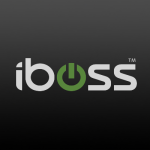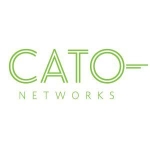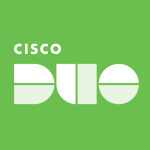What is our primary use case?
We are a small team of ITOps Engineers. With Prisma, we can manage all our Edge Network Infrastructure (Mobile Users, Remote Networks, and Data Centers) in one location.
We also decommissioned our legacy MPLS connections and moved to VPN. If we need to expand to more offices, different countries, and different regions, it would be much simpler to do it with Prisma Access because the only things required are an internet connection and a pair of firewalls.
How has it helped my organization?
On our IT team, we now have a single interface (using Palo Alto Panorama) where we can monitor our whole infrastructure. The office and Data Center Firewalls, as well as, the Remote User VPN, forward all the traffic to the Prisma Access Infrastructure. There we can apply deep packet inspection and allow or deny traffic, and also apply additional security features like threat prevention, DNS security, malware and anti-virus protection etc.
For remote users, the VPN connection is more secure and much faster than the legacy solutions. Some of our users are located in different European countries. Now they can pick their closest location and connect to a VPN "concentrator" near their region. Whereas before, they needed to connect with one of our data centers in the UK.
Since everything is connected to Prisma, now we are able to be more proactive, detect end-user or site connectivity issues much faster. Before we were running multiple applications (NMS, Syslog, Netflow) that required a lot of engineering overhead to manage those, but also to extract the information needed. Now a lot of those tasks can be picked by the Service Desk team.
In addition, similarly to any other Cloud "Platform" the administrative tasks have been dramatically decreased. The upgrade process is very simple compared with any on-premise solution.
What is most valuable?
I don't think we have actually fully utilised all the functions of Prisma yet. The main concept of Prisma Access is what really help us to transition our infrastructure from a legacy and complex approach to a more simple and easy to manage and maintain one.
Prisma Access has three major components / connections:
- Remote connections: The links to the Remote Offices
- Mobile Users
- Service Connections : The links to the Data Centers.
You connect everything by establishing VPN tunnels with the Prisma Access Infrastructure. Prisma is now the “brain” of the infrastructure. All edge devices send all traffic to Prisma and Prisma has the knowledge to route the traffic to the correct destination. In addition you can also apply all the additional security features a NGFW can offer.
Since this is a cloud platform you can easily scale up adding more mobile users or new remote offices. Prisma will simple auto-run (if needed) additional instances in the cloud to support your load
Also, because everything's on the cloud, we don't have to worry about patching; we get all the new features as they come in. One of the biggest problems for us used to be to upgrade our VPN application. Now, it can be done with a click of a button. The administrative overhead has been reduced, and we are able to focus on things that actually matter.
What needs improvement?
The only drawback at the moment is that a “Cloud” solution like Prisma Access requires Palo Alto Panorama, which is normally a VM that sits in your DataCenter. Panorama is used for monitoring and mainly for configuring the different components of Prisma Access.
For the configuration part, Palo Alto has recently introduced an equivalent cloud application, but not all features are available yet. Also at this moment if you enable Prisma Access with Panorama you cannot migrate to the Cloud version.
For how long have I used the solution?
I've been working with the Palo Alto team since the beginning of the year (2021), when we started the initial setup. It took us around 2 months (multiple weekly sessions) to complete the setup. And the last 2 months we are fully utilising the Prisma components (Remote Networks, Service Connections and Mobile Users)
What do I think about the stability of the solution?
We have utilised Prisma Access for the late couple of months. Now we are in the process of migrating all our Remote users from the on premise Firewalls to the Prisma Access VPN as a Service solution.
Over this period we haven't faced any connectivity issues. Prisma Access underlying infrastructure is high available and scalable.
As any major Cloud Vendors line Google or AWS we may face outages in the future, but we havent experience any problems yet.
As with any infrastructure where the managent plane is in the cloud, we can know schedule an upgrade and the Prisma will take care the rest. No more complicated upgrade processes that could lead to outages and downtimes.
A few days ago the Prisma Access dataplane was upgraded. We had zero downtime and the auto-procwss went smoothly (as expected).
What do I think about the scalability of the solution?
As for scalability, you can easily bring more users to the platform; you would just need to buy additional licenses.
There is no need for purchasing new and more powerful hardware. Palo Alto will scale your platform up to support your infrastructure.
Simple integration with LDAP, SAML can help us to provision 100s of users quickly and onboard more users are the company is getting out of the pandemic freeze period.
How are customer service and technical support?
I think Palo Alto has great technical support in terms of the time of response and the efficiency of response.
Over the past few months we raised multiple tickets (P2-P4). On all of them the responses were quick within the SLA timelines. All the support Engineers had deep knowledge of the product, and always went above and beyond not only by fixing our issues, but also by trying to explain us why was misconfigured or what actually went wrong. Everyone had great communication skills, they were patient and listening our needs and requirements.
Which solution did I use previously and why did I switch?
We used local Cisco ASA Firewalls that were located in our two UK offices.Normally we had around 10-15 % of our users working remotely. During the pandemic we had to setup around 500 users to connect to the VPN. Unfortunately our ASAs had limited capabilities (250 max users for the 5515-X and 100 for the 5508-X). Our temporary solution was to use the AWS VPN solution for the remaining users.
At that point we realised that we need a flexible and scalable solution. In addition the company has embraced the cloud first approach a few years back by moving all our servers to the cloud, so utilising a VPN as a Service (offered by Prisma Access) was an expected next step.
In my team there are Cisco certified engineers and we have been using Cisco products for many years, but for my opinion when it comes to security and NGFWs, but they haven't reached the level of Prisma Access by Palo Alto Networks. I believe Palo Alto is the key player in the market.
How was the initial setup?
We had a mixture of different applications and vendors, and we wanted to merge everything under Prisma Access. The terminology is a bit different between Palo Alto and Cisco ASA, and between their local firewalls and the Prisma Access firewalls. It took us about a month to wrap our heads around it and understand how things worked. Once we did that, it was easy to implement. We have gradually migrated all our services. We did our MPLS and the connection to AWS, and now, we're slowly migrating the users. No one has noticed, so it has been seamless.
We don't have a big infrastructure and did the migration piece by piece, and it was really easy and seamless.
To set up the infrastructure with the team, it took us less than a week. The gradual migration took us three weeks, but the basic setup takes less than a week.
What about the implementation team?
We used the Palo Alto professional services, which mainly help us though multiple Zoom sessions to understand all the Prisma components and also to configure the core Prisma setup. The fine tuning was done by the in-house team.
We had a great experience. All the Palo Alto consultants had a great knowledge of the product and they were very helpful, making it very simple for us to understand this new Platform. They were never leaving any questions unanswered and they were always providing accurate documentation and references for my team to get the required knowledge and to understand / follow up during the Setup.
What was our ROI?
I think the ROI has been good. We no longer need people to maintain the whole infrastructure, and we do not need to spend money on different services that we no longer use like MPLS or other kinds of support.
Also, the fact that we can quickly scale up without worrying about buying additional licensing is great for us.
What's my experience with pricing, setup cost, and licensing?
The price has been good for the ROI during these difficult times for the cruise industry. With Prisma, you need three types of licenses
- Palo Alto support
- Number of Remote Users that are connected to VPN (concurrent connections)
- Total Bandwidth between Remote Sites offices and Prisma. If you have three or fewer DCs then you don't have to purchase additional connections or bandwidth.
There are no hidden costs; what the product offers is what you get.
Which other solutions did I evaluate?
We didn't run any PoC with other vendors. Before we were introduced to Prisma Access we were thinking of moving also our Firewalls to Meraki (as we will do with our switches). I believe no other vendor can offer what Palo Alto with Prisma provides, at least at this moment.
What other advice do I have?
In my experience, Prisma Access is a great platform. However, since SASE is a new fairly new concept, it was a bit confusing to understand all the different components and how all of them work together. On top of that if you are not very familiar with Palo Alto firewalls and especially Palo Alto Panorama, additional training would be recommended. Of course the same concepts of a NGFW from any other vendor are applied.
Once you grasp how Prisma Access works, then it's really a piece of cake to set everything up.
For example, we are a small team of three people, and I'm the senior network engineer. My VPN knowledge was not good because we've mainly had MPLS. Still, it was very easy to set everything up.
You setup everything through the web GUI (Palo Alto Panorama). You don't need to know a lot about CLI. With Cisco devices, you have to be an expert in CLI to set up a few things.
On a scale from one to ten, I would rate Prisma Access by Palo Alto Networks at ten because it's an innovative product. They “invented” the whole concept (SASE), and they're way ahead of other competitors.
Which deployment model are you using for this solution?
Public Cloud
If public cloud, private cloud, or hybrid cloud, which cloud provider do you use?
Amazon Web Services (AWS)
Disclosure: My company does not have a business relationship with this vendor other than being a customer.














